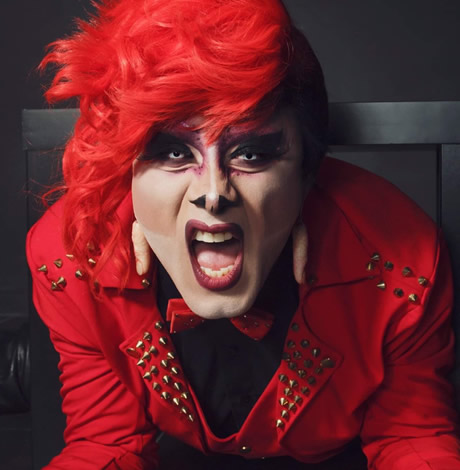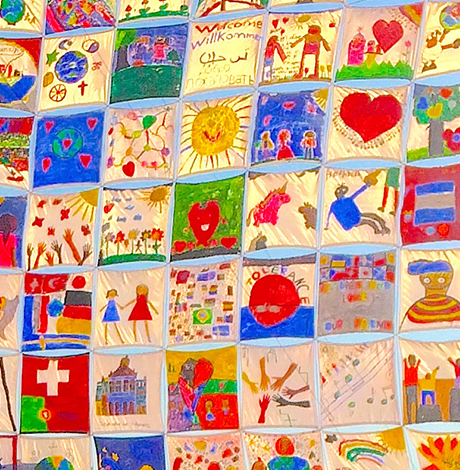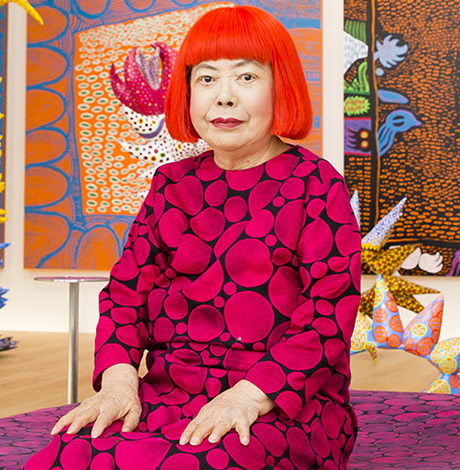Galleries
SUMMER IN THE CITY 2019: galleries
Foundry, Hillwood, Newseum and more have compelling summer exhibits
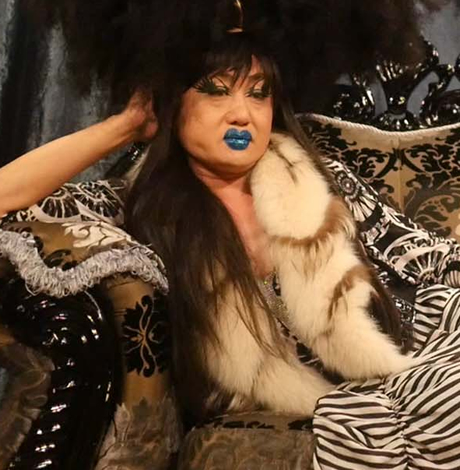
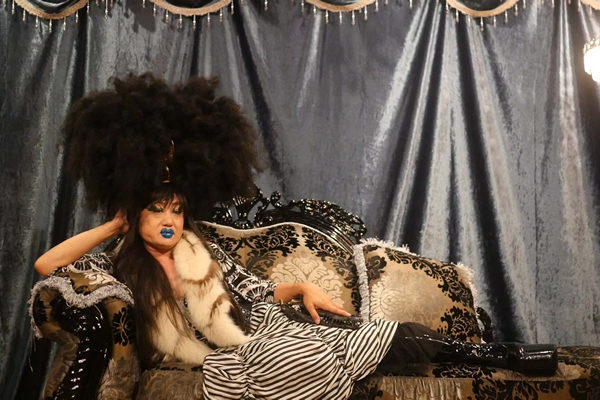
Washington boasts nearly 80 museums and galleries and most are inexpensive with admission prices ranging from free to $30. So, if Stonewall celebrations whetted your appetite to be out in the community, D.C. offers much more arts and culture to feast upon.
Gallery B (7700 Wisconsin Ave., Suite E, Bethesda, Md.) will present an exhibition of work by Maryland Federation of Art members July 3-27. The exhibition is juried by Robert Yi, a recipient of the A.H.O. Roll Prize in Fine Arts and the Mae W. Jurow Scholarship who is also exhibiting at the Hylton Performing Arts Center (10960 George Mason Cir., Manassas, Va.) July 14-Sept. 8 with an opening reception July 25. Yi’s portrait paintings have ranged from Mohammed Ali and the Dali Lama to muscular men in tiny briefs. Gallery hours for the MFA show will be Wednesday-Saturday, noon-6 p.m. with a public reception on Friday, July 12 from 6-8 p.m.
The D.C. Center (2000 14th St., N.W.) presents “Queer Japan,” a colorful documentary celebrating the triumphs and struggles of being a sexual and gender minority in modern Japan, July 27 at 7 p.m. This film is part of the Reel Affirmations XTRA monthly LGBTQ film series showing at Landmark’s E Street Cinema (555 11th St., N.W.). Tickets are $14. August 2-4 is the Outwrite Literary Festival and features award-winning novelists Kristen Arnett and Jericho Brown as well as queer poet and drag performer Wo Chan. Arty Queers continues as the Center’s monthly indoor LGBTQ art market featuring work crafted by local artists, and Center Arts Gallery will hold a closing reception for professional photographer and graphic designer Todd Franson Saturday, Sept. 7, from 7-9 p.m. at the D.C. Center. For more information on these and other events, visit thedccenter.org.
The Wentworth Gallery (7101 Democracy Blvd., Bethesda, Md. and 1807 Galleria at Tysons II, McLean, Va.) is exhibiting works by artists Charles Fazzino and Elena Bond this July and August. Fazzino, a 3-D pop artist, uses bright colors and detail to construct lithographs and serigraphs that are finished with either acrylic or glitter paint. His Batman-themed piece has a retro-look. Bond’s work is soft and impressionistic with soothing imagery such as crowds meandering down rainy streets. For more details, visit wentworthgallery.com.
The National Gallery of Art (6th and Constitution Ave., N.W.) presents “By the Light of the Silvery Moon: A Century of Lunar Photographs” July 14-Jan. 5. The exhibit marks the 50th anniversary of the Apollo 11 moon landing on July 20, 1969. An exhibition of some 50 works will include a selection of photographs from the unmanned missions leading up to Apollo 11 as well as images taken by Neil Armstrong and Buzz Aldrin. An exhibition of Renaissance artist Verrocchio begins Sunday, Sept. 15. Verrocchio, who never married, was master to other greats such as Leonardo da Vinci. For more information, visit nga.gov.
The Greater Reston Arts Center (12001 Market Street, Suite 103, Reston, Va.) presents “Overlooked,” a group exhibition featuring artists who seek to bring awareness to issues often not a part of “polite conversation,” July 13-Aug. 31. July 13 there will be an artist talk at 4 p.m. followed by an opening reception from 5-7 p.m. Artists include Leila Abdelrazaq, whose short animated film “Still Birth” was commissioned for the 2018 Palestinian Young Artist of the Year Awards exhibition; Lorenzo Cardim, who explores how queer people and other social minorities question the status quo; former Hamiltonian Fellow Larry W. Cook; Leigh Davis, whose work navigates the line between voyeurism and empathy; Helina Metaferia, whose art asserts the black body into sites of systemic oppression; Matt Storm, whose trans-centric photography explores identity through self-portraiture; and Julie Wolfe, whose work has been reviewed in ARTnews and BBC American. Visit restonarts.org for more information.
National Geographic Museum (1145 17th St., N.W.) presents “Queens of Egypt,” which is on display through Sept. 15. This exhibition explores the role powerful women such as Hatshepsut, Nefertiti and Cleopatra played not only in Egypt but on the world stage. The exhibit is open daily from 10 a.m.-6 p.m. with the last ticket sold at 5 p.m. General admission tickets are $15; for seniors, students and military members, $12; and for children ages 5-12, $10. Annual pass members and children under 5 are free. For more information, visit nationalgeographic.com.
The National Museum of African-American History and Culture (1400 Constitution Ave., N.W.) presents “Taking the Stage,” an exploration of the history of African Americans in theater, film and television. Located in the fourth floor culture galleries, “Taking the Stage” provides visitors with the opportunity to reconnect with some of their favorite popular culture memories through artifacts such as Eddie Murphy’s Detroit Lions jacket from “Beverly Hills Cop” and the outfits worn by Sherman Hemsley and Isabel Sanford in the groundbreaking series “The Jeffersons.” The exhibition showcases stories of how African-American artists have enriched American culture through entertainment while also crafting possibilities for social change, such as with “Star Trek’s” first televised interracial kiss. The museum offers free timed passes for entry, which can be reserved at etix.com. For more information, visit nmaahc.si.edu.
The Freer|Sackler Gallery (1050 Independence Ave., S.W.) presents “Body Image,” one of many multicultural exhibitions displaying at the gallery this summer. “Body Image: Arts of the Indian Subcontinent” explores through art how the human body is central to artistic expression on the Indian subcontinent in terms of sharing fundamental beliefs. The first room considers the perfect bodies of the Hindu gods before turning to the Indian courtly body as site of both pleasure and power. The rear gallery introduces the enlightened bodies of Buddhist and Jain traditions, as well as divine conceptions that transcend physical form. Admission is free. For more information, visit museum.oas.org.
The National Museum of Women in the Arts (1250 New York Ave., N.W.) hosts “Power in My Hand: Women Poets, Women Artists and Social Change” through Oct. 31. This exhibit shows the enduring solidarity between women poets and artists using words and images illustrating the communication and inspiration across geographic boundaries and historical eras. Examples include Muriel Rukeyser’s honor poem for the German artist Kathe Kollwitz and Judy Chicago’s “Dinner Party” artistic homage to poet Emily Dickenson. Regular admission is $10; $8 for visitors 65 and older and students and free for museum members and children 18 years and younger. For more information, visit nmwa.org.
The Foundry Gallery (2118 8th St. N.W.) offers an alternative gallery experience, through artist talks, workshops, opening receptions, demonstrations and consultations. This summer’s exhibition includes “The Habitual Line” by Joseph Shetler July 3-28 with an opening reception on Saturday, July 13 from 5-8 p.m. Shetler’s work is post-minimalist reflecting the practice of simplicity in art and life and honoring his Mennonite heritage. The Foundry Gallery is a non-profit organization supported by member dues, sales commissions and community donations. For more information, visit foundrygallery.org.
Hillwood Museum (4155 Linnean Ave. N.W.) presents “Mid-Century Master: The Photography of Alfred Eisenstaedt” and the art collection of Adelaide Close Riggs. The Eisenstaedt collection features nearly 50 photographs from his career in photojournalism, focusing on his images of mid-20th century life and the era’s most celebrated figures. Riggs, eldest daughter of patron Marjorie Merriweather Post, was a notable art collector whose collection includes portraits, clothing and more. The exhibits run through Jan. 12 and suggested donations range from $5-18. Visit hillwoodmuseum.org for details.
Artists and Makers Studios (12276 Wilkins Ave., Rockville, Md.), an art center complex hosting about 150 resident artists, will host Black Artists of D.C. and the National League of American Pen Women for the month of July. Saturday, July 20, 1-3 p.m. is the Black Artists of D.C. talk. Other events include Theremin Music with Arthur Harrison, Solo Acoustic Guitar with David Ziegele and a Montgomery County Camera Club exhibition titled “Photojournalism and Street Life.” Exhibits continue through July 24 and viewing hours are 10 a.m.-4 p.m., Tuesday-Saturday and Sundays/Mondays by appointment. For more information, visit artistsandmakersstudios.com.
The Newseum (555 Pennsylvania Ave., N.W.) presents “Rise Up: Stonewall and the LGBTQ Rights Movement” on display through Dec. 31. This exhibit explores the modern gay rights movement in the U.S. and marks the 50th anniversary of the 1969 raid of New York’s Stonewall Inn. The Newseum also screens “Into the Streets,” a film exploring how the LGBTQ rights movement harnessed the power of public protest to change policy and shift culture, in the Robert H. and Clarice Smith Big Screen Theater on Level 5. Admission is $24.95 for adults ages 19-64, $19.95 for seniors ages 65 and older, $14.95 for children ages 7-18, and free for children 6 and younger. For more information, visit newseum.org.
Hemphill Fine Arts Gallery (1515 14th St., N.W.) presents its summer show July 13-Aug. 23 with a reception on Saturday, July 20 from 4-6 p.m. The exhibition features modern and contemporary art in all media by artist ranging from emerging to mid-career to modern masters. Gallery hours are Tuesday – Saturday, 10 a.m.-5 p.m. and by appointment. Visit hemphillfinearts.com for more information.
Galleries
New gallery opening in D.C.
Dandelion Collective exhibition features works by John Von Sauerhoff
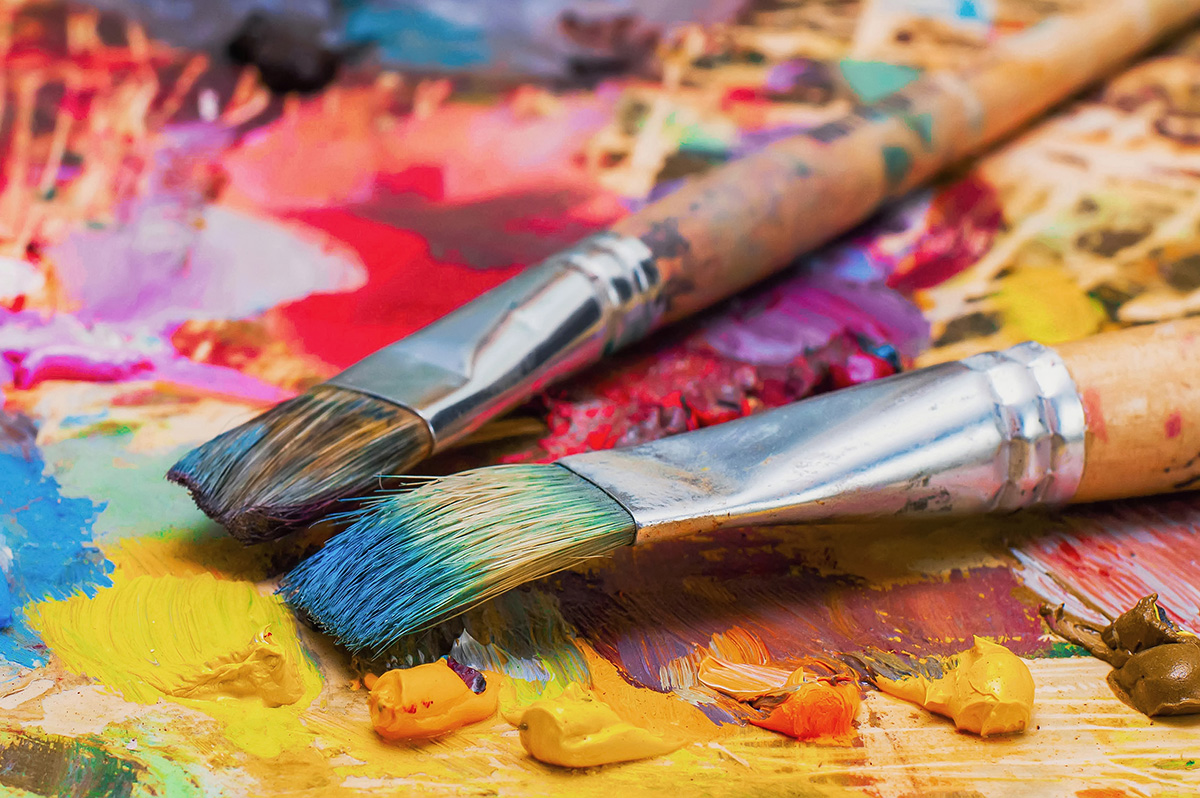
Dandelion Collective, a new space in Columbia Heights for LGBTQ healers and artists, will open on Saturday, Aug. 24 with an opening reception at 2 p.m. at 3417 14th St., N.W.
This first exhibition features the incredible, ethereal artwork of John Von Sauerhoff. His stunning pop surrealist paintings will transport you to another world.
More information is available at dandelioncollectivedc.com/art-gallery.
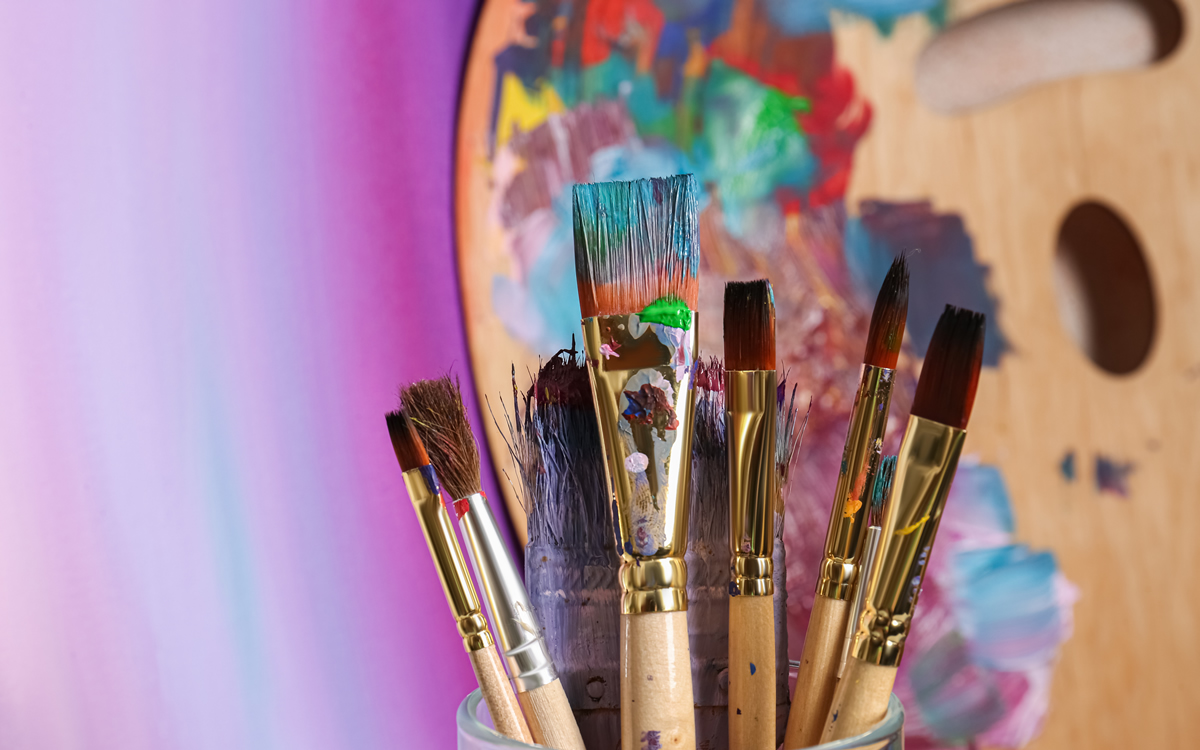
New England artists Caroline Rufo and John Rufo, also known as RufoArt will open an exhibition on Thursday, Aug. 10 at 6 p.m. at Nepenthe Gallery.
The husband-and-wife duo will share their paintings and also talk about their inspirations. Caroline explores the natural beauty, ideas, and systems of power that create her surroundings while John works toward an understanding of art as a representation of singular moments of both immediate presence and a larger context of wholeness.
For more details, visit Nepenthe Gallery’s website.
Galleries
John Waters introduces the world to his ‘roommates’
Baltimore Museum of Art showcases filmmaker’s eclectic collection in new exhibit
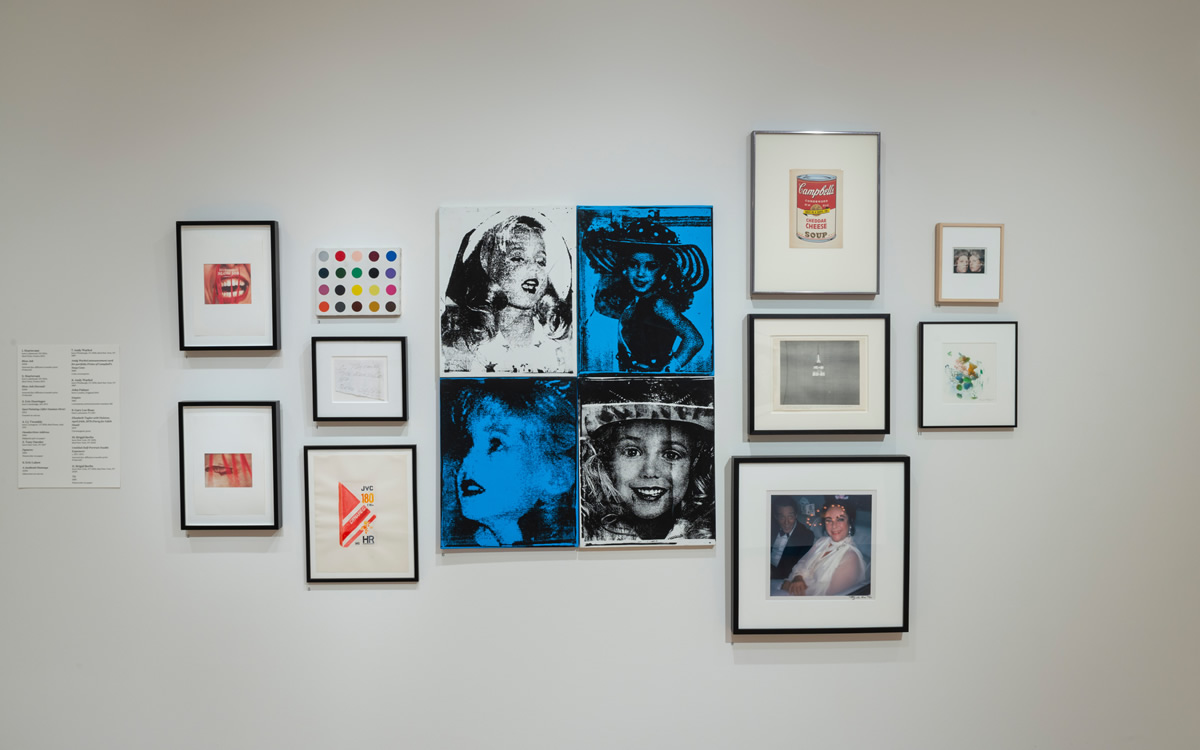
As open as he is about his childhood and his movies and the causes he supports, writer and filmmaker John Waters remains guarded about his personal life.
From Waters’ books, interviews and speaking engagements, fans know that he’s gay and who his longtime friends are. They know he has three residences — in Baltimore, New York, and San Francisco — and that he spends his summers in Provincetown. They know where he plans to be buried, and with whom. But Waters reveals little about his most intimate relationships.
“I have to talk about my movies. I have to give interviews to promote what I’m doing,” he once said. “But no one really knows my personal life. And if you don’t have a personal life, I feel bad for you.”
So it was a bit surprising this fall to hear Waters talk about the “roommates” he lives with, as if he’s a college kid in the freshman dorm, or he’s renting out rooms to cope with inflation.
During a press briefing about a new exhibit at the Baltimore Museum of Art, Waters volunteered that he has roommates in each of his three residences. In many cases, he said, he’s had these roommates for years. And they’re not members of his biological family; he chose to live with them.
But for those hungry for morsels about Waters’ private affairs, these aren’t exactly romantic roommates. The museum event was a preview for “Coming Attractions: The John Waters Collection,” an exhibition of 83 works of contemporary art from Waters’ personal collection, that runs until April 16, 2023. And ‘roommates,’ Waters explained at the briefing and in a “go mobile’ narration that accompanies the show, is the term he uses to refer to the works of art at his different homes.
“My roommates — that’s what I’ve always called my art collection,” he said at the media event.
“I call art my roommates because I live with them,” he explains in the taped narration. “I look at them every day…We live in a commune.”
Waters’ notion of art works as roommates is not new. He wrote about it in a chapter of his 2010 book, “Role Models,” in which he describes the art in his homes as roommates, having traits that he likes and seeks out for all of his homes. He said he prefers the companionship of art-roommates to live ones.
“No sirree, no real-life people sharing my bathroom or reading my newspapers before me!” he vowed. “Instead, I live with artists. Mike Kelley is one of my roommates.”
Visitors to Waters’ homes, including guests at his annual Christmas party in Baltimore, have been lucky enough to see what he’s talking about. The BMA exhibit is the first time he’s shared his companions on such a large scale.
Part of the fun of the exhibit for him, Waters said during a walk-through of the show, has been seeing his roommates from his three different residences, in the same space for the first time, in some cases side-by-side.
“They’ve never met each other before,” he said. “It was like [the curators] were introducing different artists that should have met a long time ago.”
Though he’s perhaps best known for films such as “Hairspray” and “Pink Flamingos,” bestsellers such as “Role Models” and “Carsick,” and nicknames such as “The Pope of Trash” and “The Prince of Puke,” Waters, 76, is also a visual artist and noted art collector.
He was the subject of a retrospective entitled “John Waters: Indecent Exposure” at the BMA and the Wexner Center for the Arts in Columbus, Ohio, in 2018 and 2019. He has two works on view in the inaugural show at the Rubell Museum that recently opened in Washington, D.C., “Beverly Hills John” and “Shoulda!”
The 83 works on view in “Coming Attractions” were culled from a larger group of about 375 works that Waters, a Baltimore native and BMA trustee, has agreed to leave to the museum when he dies.
Waters’ gift to the BMA includes 288 works by 125 artists other than himself, in a variety of art forms. Waters also donated 87 prints, sculptures, mixed-media and video pieces that he created. His gift will make the BMA the greatest single repository of his visual artwork and will enable it to provide, in perpetuity, a comprehensive view of his vision and approach to making and collecting art.
When Waters’ gift was announced in 2020, directors promised the museum would have a preview of what’s to come while he was still alive, and this is it. All of the works in the show are on loan from Waters and will go back to him when the show is over.
In return for his gift, the museum board said it would name restrooms and a rotunda after him. That wasn’t a putdown. Known for his raunchy humor and offbeat way of thinking, Waters specifically asked to have his name on the restrooms, the first at the BMA that are “all gender.”
Christened last fall with a “first pee” by trans artist and activist Elizabeth Coffey, The John Waters Restrooms are right next to The Nancy Dorman and Stanley Mazaroff Center for the Study of Prints, Drawings and Photographs, where “Coming Attractions” opened on Nov. 20. The museum has also agreed to display prominently five works from the collection, including one by Waters, at all times.
“Coming Attractions” is one of two Waters-related museum exhibits opening over the next year, along with “Pope of Trash,” a career retrospective at the Academy Museum of Motion Pictures in Los Angeles in 2023. Dates for the retrospective have not been announced.
Unlike “Indecent Exposure” three years ago, “Coming Attractions” doesn’t include works by Waters. Instead, it provides an insider’s look at his tastes in contemporary art, and how he lives with art, by focusing on works by others that he has collected and displayed at his homes in Baltimore, New York, and San Francisco.
The guest curators are photographer Catherine Opie and multi-media artist Jack Pierson, both of whom have been friends with Waters for years and are represented in his collection. Both identify as queer, as do many of the artists represented in the exhibit. The show is organized by Leila Grothe, the museum’s Associate Curator of Contemporary Art.
Among the featured works are paintings, sculptures, photographs, and prints by Diane Arbus; Nan Goldin; Mike Kelley; Cindy Sherman; Cy Twombly; Andy Warhol; Christopher Wool, Gary Simmons and others.
The museum refers to the exhibit as “a cutting-edge articulation of American individualism, particularly as it relates to queer identity and freedom of expression.”
“All of John has been a go-to for me, as a young queer,” said Opie, who has a portrait of Waters in the show. The works “represent a type of contemporary art that the museum actually just doesn’t really have,” Grothe said.
Waters’ collection is a reflection of his personality and imagination, Opie and Pierson said in a joint statement.
“Our hope is to share with audiences another aspect of John’s creative vision by offering a glimpse into what he values: artists who are unafraid to take risks, who do not compromise, and who create their art on the margins.”
The roommate reference could have been a one-liner, but Waters takes the idea and runs with it, building on what he wrote in his Roommates chapter in “Role Models.”
“They delighted me or made me angry or made me laugh or I thought did something in a new way,” he said of his companions. “They just challenged me and I wanted to live with them because art’s your roommates. You live with them forever.”
In talking about his ‘roommates,’ Waters makes it seem as if they are sentient beings who have minds, feelings and personalities of their own, and who can interact with each other, perhaps when the museum is closed.
He paints a picture of his roommates being the art world equivalent of the robotic “hosts” in HBO’s “Westworld,” or the exhibits from “Night at the Museum” and its sequels, movies in which works of art come to life.
Waters talks about his roommates hanging out together, knowing they’re in the home of the Cone Collection with its priceless paintings by Henri Matisse and other masters. He thinks about how they’re adjusting to their temporary home. He muses about them developing relationships they couldn’t have in the different residences and becoming friends. He imagines his roommates plotting with each other. He fantasizes about them sneaking out of the gallery they’re in and exploring other parts of the museum.
Asked at a donors’ event how he thinks his roommates are getting along in their new setting, Waters didn’t miss a beat: “I think they’re so happy to meet each other,” he said. “And they all want to gang up and scare The Blue Nude.”
It’s not that much of a stretch to think in those terms, since many of the works in Waters’ collection are images either of his friends (the late Cookie Mueller), or by his friends (Vincent Peranio), or both (Susan Lowe’s drawing of Mink Stole.)
The curators are going along with it, too, talking about ‘introducing’ different works so they can be “in conversation’ with each other.
“John delights in the fact that these works, all pulled from different homes, are meeting each other for the first time,” Grothe said at the press preview, pointing to a wall with works from three different residences.
“How great does this wall look with Richard Tuttle on the left, the sculpture by Vincent Fecteau in the center, and Gary Simmons on the right?” she asked. “There’s a lot to say about each artwork, but for now we should just appreciate the budding of a new friendship between these pieces.”
The curators positioned certain works to show how they “begin to speak to one another in different ways,” Opie said. “Throughout the exhibition, you’ll notice these little groupings…that we ended up putting together so that they could have a conversation.”
Was anyone left out of the party?
Pierson said he regrets that there isn’t an “Edith Massey moment” in the show, in honor of the character who played Edith the Egg Lady in “Pink Flamingos,” so her voice could be part of the mix. “I’m sure I could have found one,” he said.
“The only piece that would remind me of her [is one] that I didn’t buy but I wish I did, by George Stoll,” Waters said. “He made fake Easter eggs, but the collector hides them in their house so no one ever sees them. And you forget them, yourself, that you have them. And then you’re going through an old drawer – Oh! There’s a piece of art I bought!”
During the donors’ event, Grothe asked Waters what his homes feel like with much of the art out on loan. She said people at the museum are worried about him, living without his roommates. Waters said his homes look and feel empty.
“It looks like I’m moving, everywhere, because they didn’t take everything,” he said. “So there are big holes in the wall, and dirt.”
Waters said he keeps thinking Louise Lawler should come over, a reference to the artist who’s made a career of studying and documenting art installations. “It’s a great installation for her to do.”
Waters went even further in the taped narration, likening his residences to scenes of a crime, still in disarray.
“They have come to all my homes and taken half the stuff off the walls,” he laments. “So now I live in abandoned squats that look like art robberies happened in my house.”
At the same time, he admits, his roommates look good in their museum setting.
“You can see them so much better,” he said. “I don’t have good lighting. They cleaned them, too. They were dirty, some of them.”
Even though the show just opened, Waters is already thinking about what happens after it comes down.
“It’s weird,” he said. “It’s going to be hard to put them back where they went after seeing them in here together.”
Waters said he thought about putting his roommates back differently, taking cues from the exhibit and preserving some of the new ‘relationships’ formed at the museum. He said he‘s grateful to the curators for coming up with “a whole new way” to show them off.
“Maybe I’m going to never be able to hang it back the way it was [and] have to put it back the way you did it,” he told the curators at one point.
But ultimately, he said, he decided against shifting everything around.
“Oh god, that would really be complicated,” he said. “I’d have to move all the furniture and change everything. So they will go back, lonely.”
Waters said he knows that won’t be as much fun for his roommates, not hanging with their new friends. But he notes this isn’t the last time they’ll see each other, since they’ll be returning to the museum eventually.
After all, he said, “they know that way later, after I’m dead, they’ll get together again.”
-

 U.S. Supreme Court2 days ago
U.S. Supreme Court2 days agoSupreme Court to consider bans on trans athletes in school sports
-

 Out & About2 days ago
Out & About2 days agoCelebrate the Fourth of July the gay way!
-

 Virginia2 days ago
Virginia2 days agoVa. court allows conversion therapy despite law banning it
-

 India5 days ago
India5 days agoAnaya Bangar challenges ban on trans women in female cricket teams

